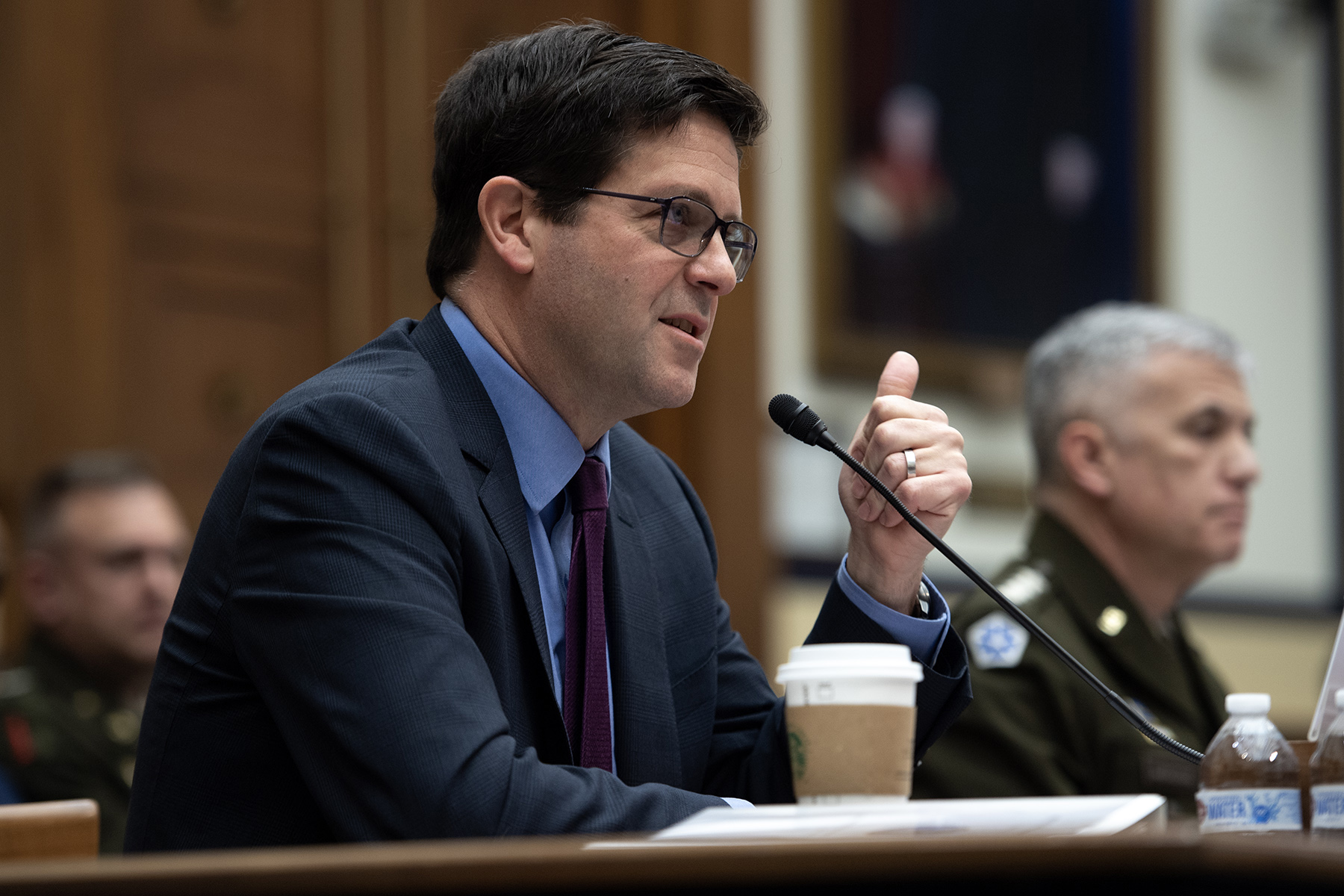WASHINGTON — The Defense Department on Sept. 14 submitted to Congress a report explaining how it intends to keep satellites in orbit safe from aggression — and ensure that services like GPS navigation and space-based communications are always available.
The unclassified report, “Space Policy Review and Strategy on Protection of Satellites,” was mandated by law and is an attempt to explain how DoD is dealing with threats facing U.S. satellites, such as Russian jammers and Chinese lasers that can blind satellites.
The report responds to congressional requirements from the 2022 and 2023 National Defense Authorization Acts. One directs DoD and the intelligence community to review the space policy of the Department of Defense. The other requires DoD to “make publicly available a strategy containing the actions that will be taken to defend and protect on-orbit satellites of the Department of Defense and the intelligence community from the capabilities of adversaries to target, degrade, or destroy satellites.”
Assistant Secretary of Defense for Space Policy John Plumb said the document “helps us communicate in policy-speak a few key messages” such as the role of space in national security and the idea that space is a domain of war, like sea, air and land.
Although Congress mandated an unclassified report, DoD submitted a separate classified annex because many of the significant details related to the defense of space are secret.
During a call with reporters to discuss the release of the strategy, Plumb said the department “is continuing to push on multiple fronts to update our classification policies and guidance, to be able to share information at the appropriate levels.” Reducing classification from ‘top secret’ to ‘secret,’ for example, “can have great value,” he said.
DoD will defend our national security interests from the growing scope and scale of counterspace threats
Space Policy Review and Strategy on Protection of Satellites – Sept. 14, 2023
The report identifies DoD’s key priorities with regard to space systems.
One is ensuring that the joint force has satellite-based services needed for military operations. Plumb said DoD is building more resilient satellite networks “so we can take a punch.”
“We’ve come a long way in how we’re approaching resilience,” he said. “It’s baked into all of our conversations. And it’s not just satellites. It’s also the ground architecture,” he said. “It’s a never-ending challenge because the adversary adapts.”
“Being able to neutralize or minimize the impact of a threat has to be part of our approach to ensure space services to the force,” Plumb said.
Another priority is space domain awareness, which means knowledge of the space environment. “It’s critical to be able to detect and react to threats … and be able to dynamically attribute and determine intent,” he said.
The document also recognizes DoD’s responsibility to protect military forces from acts of aggression enabled by space technologies. An example of that is the way China built its space architecture to “enhance its combat power across all domains,” Plumb said.
Taking a page from the U.S. military playbook, China uses satellites to target its missiles more precisely and keep track of adversaries’ moves.
“So we will protect and defend our men and women from the space-enabled threats,” Plumb said. “In conflict, this may necessitate ensuring that our adversaries are unable to rely on their space based services to find and strike our forces.”
One of the reasons Congress requested this report is to help explain to constituents the role of various military organizations involved in space — including the U.S. Space Force, U.S. Space Command and several interagency groups — and why funding for space programs has grown significantly. “The FY 2024 budget prioritizes research, development, test and evaluation to ensure DoD can sharpen the edge of national security space through future years and meet emerging threats while simultaneously continuing to invest in near-term readiness,” the report says.
Deterring conflict
DoD in this report is also seeking to send a message to Congress and the public that it is not trying to stir up conflict in space.
Although the rhetoric has escalated, war in space is not inevitable, Plumb said. “We have the responsibility to ensure we are moving forward in a way that focuses on deterring conflict and reinforcing the safety, security, stability and long term sustainability of the space domain.”
“Every actor in space including the Department of Defense has to adjust to operate in a space domain with a large and increasing number of other actors, just as we have done for centuries on land,” he said.
DoD views China as a “pacing challenge,” Plumb said. “But we are not seeking a conflict with China. The U.S. remains committed to responsible behaviors in space.”
Defense of commercial systems
The strategy submitted to Congress does not address DoD’s role in protecting private-sector satellites used in support of military activities.
“The congressional language did not specify that. And so that’s not included,” Plumb said. Because of DoD’s reliance on commercial satellite services, the issue of how these satellites would be defended “is sort of underlying,” he said.
He said DoD advocates for greater sharing of “threat information with industry partners so that they can react,” similarly to the way the government shares cyber threat information with the private sector.
“That gets back to this issue of classification and making sure that we share information at the speed of relevance with our industry partners so they can attend to their own systems,” Plumb said.
